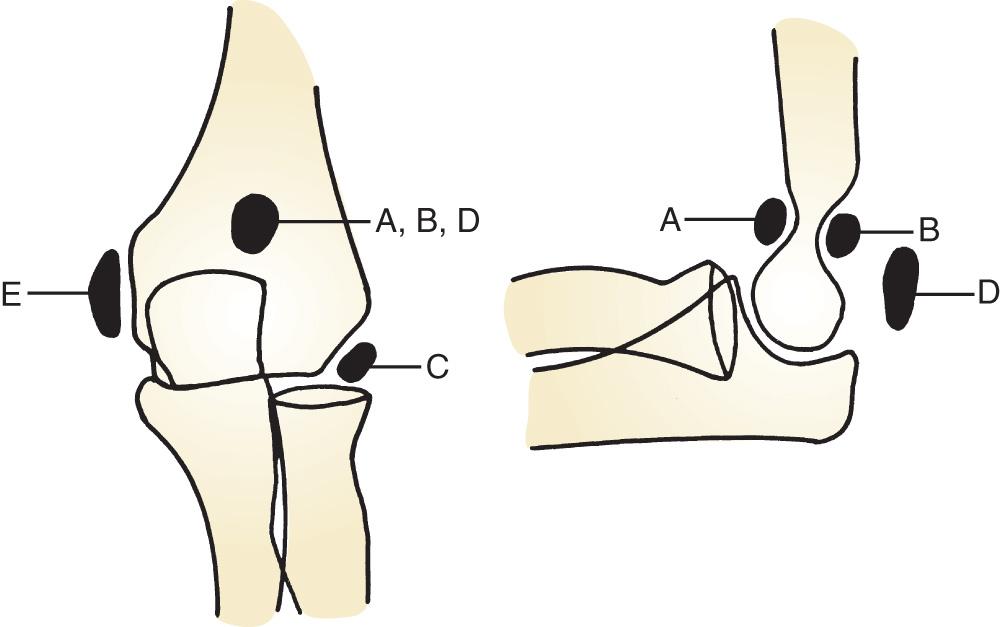Physical Address
304 North Cardinal St.
Dorchester Center, MA 02124
I personally continue to be interested in the occurrence of loose bodies in and about the elbow. This interest is reflected in the recent historical review of the subject by Konig. First described in the knee by Ambroise Paré in 1558, loose bodies occur in the elbow with a frequency second only to that in the knee. As in other joints, it is sometimes difficult to distinguish with certainty between ossification centers and acquired lesions ( Box 84.1 ).
Confusion with acquired processes is caused by accessory ossicles that occur at the elbow as normal variations. Three sites for accessory ossicles occur at the elbow: distal to the medial epicondyle, proximal to the tip of the olecranon (the patella cubiti), and in the olecranon fossa (the os supratrochleare dorsale ) ( Fig. 84.1 ).

Some ossicles show fragmentation, possibly secondary to trauma. This is sometimes mistaken for a manifestation of osteochondritis dissecans (OCD). Even though accessory ossicles may be considered a normal variation, they may also cause symptoms after trauma and require treatment.
Become a Clinical Tree membership for Full access and enjoy Unlimited articles
If you are a member. Log in here